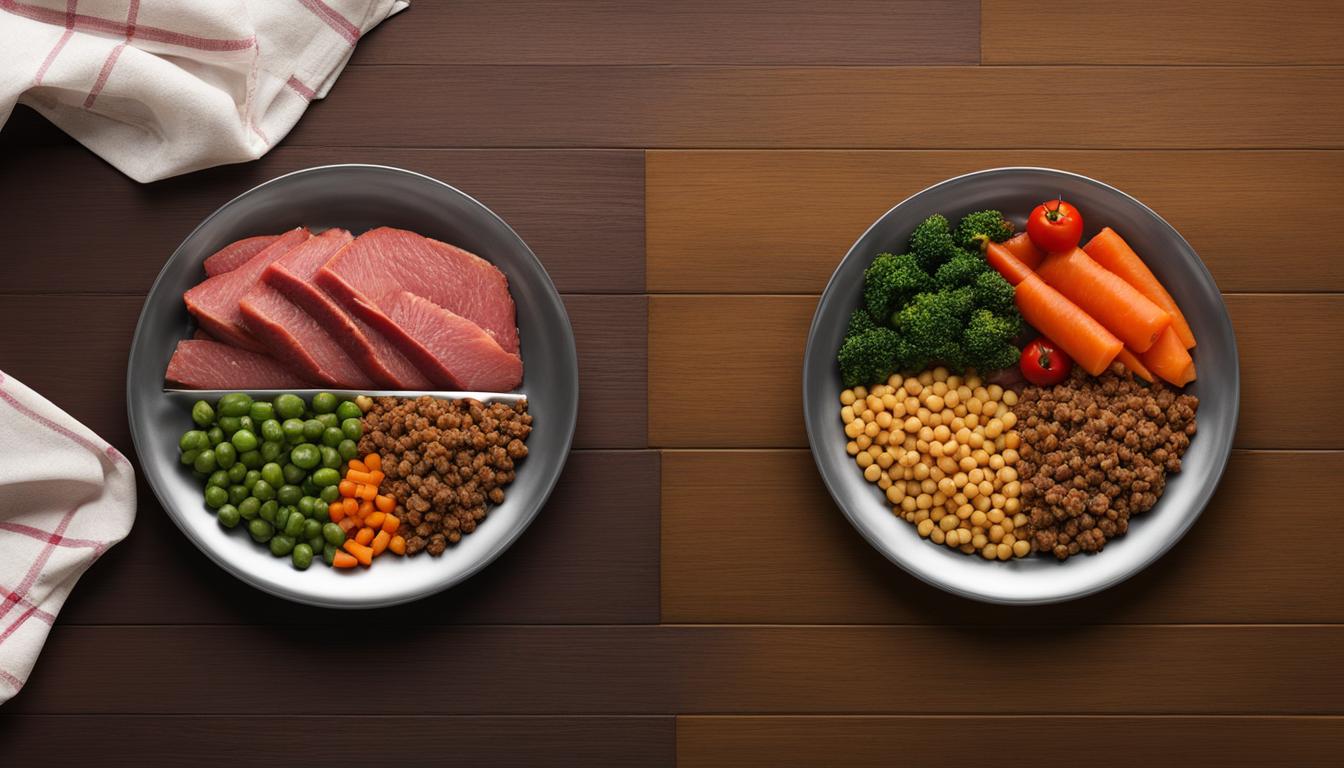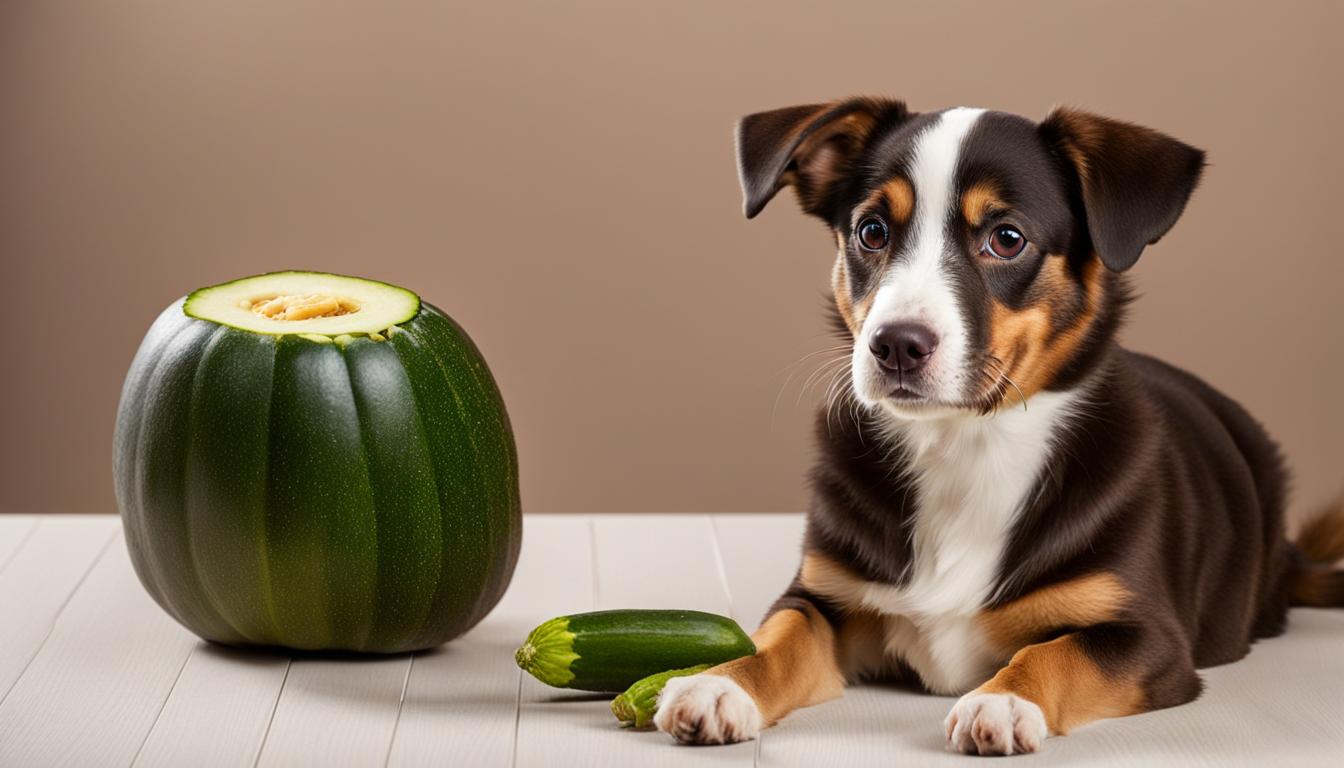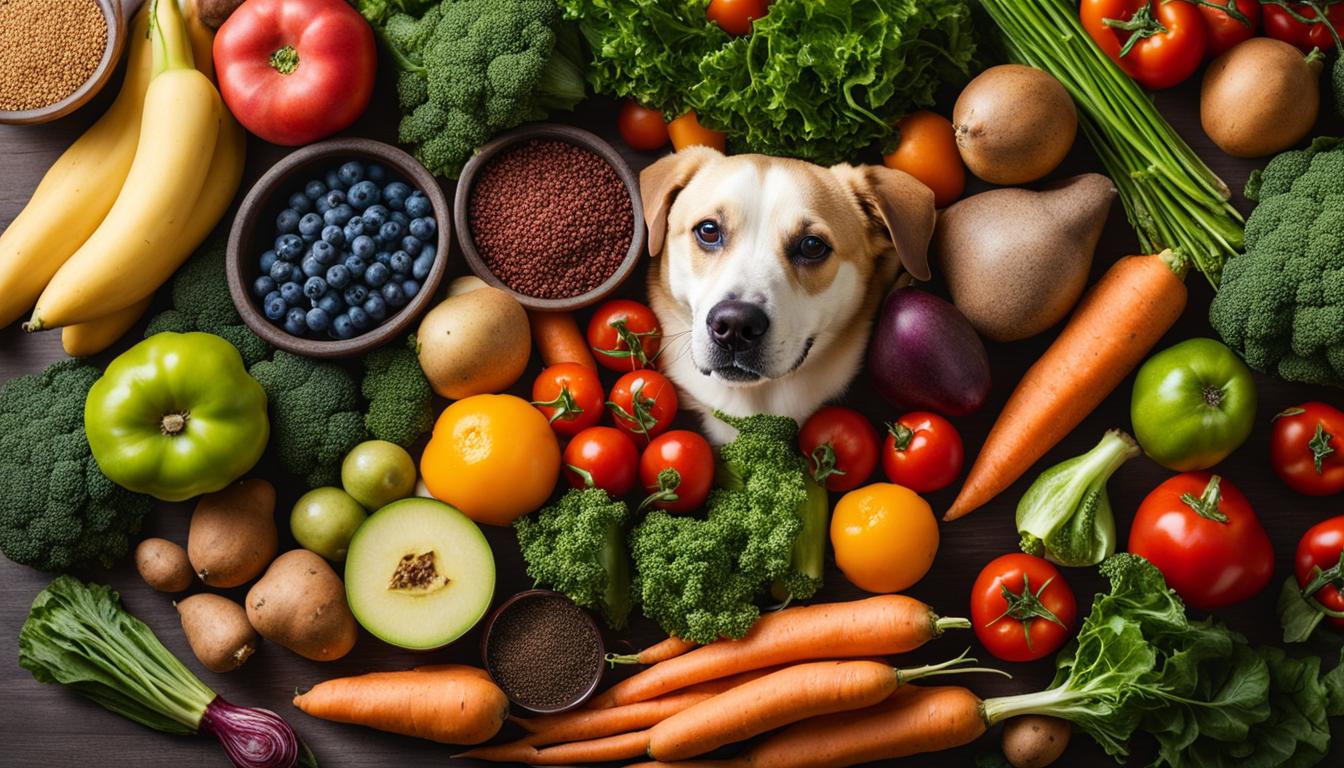Are you considering cooking food for your furry friend? Before you fire up the stove, it’s important to understand how cooking methods can impact the nutritional value of your dog’s meals. While there are benefits to homemade dog food, it’s essential to make informed choices.
When it comes to nutrition, commercial dog foods are formulated to be complete and balanced. However, cooking for your dog can offer advantages such as better diet management and the ability to cater to picky eaters. But don’t be fooled by common misconceptions – there is no scientific evidence proving that homemade dog food is superior to commercial products.
To ensure that your homemade meals are nutritious and safe, it’s crucial to avoid common mistakes. Using unsafe ingredients, preparing unbalanced meals, relying on multiple diets for “balance,” and not following trusted recipes can all have adverse effects on your dog’s health.
Key Takeaways:
- Commercial dog foods are formulated to be complete and balanced.
- Cooking for your dog can offer benefits like better diet management and appeasing picky eaters.
- Avoid common mistakes when cooking for your dog, such as using unsafe ingredients and not following balanced recipes.
- Consult trusted sources for recipes and consider the impact of dietary changes on your dog’s health.
- Understanding the best cooking methods and ingredients is essential for maintaining the nutrient content of homemade dog food.
The Impact of Cooking on Nutrients in Dog Food
When it comes to cooking dog food, many pet owners wonder about the impact on nutrient retention. While cooking does change the availability of nutrients, it doesn’t necessarily destroy them. In fact, certain cooking methods can actually increase the bioavailability of nutrients for your furry friend.
For instance, cooking beef liver can result in higher amounts of copper, iron, vitamin A, and B12 compared to raw liver. Similarly, cooking vegetables like spinach can help break down oxalic acid, making calcium and iron more accessible. Even when it comes to grains, cooking oatmeal can neutralize phytic acid, enhancing the digestibility of essential nutrients.
Overall, the heat from cooking can break down some nutrients while making others more digestible and absorbable for your dog. It’s important to keep in mind that the impact of cooking on nutrients can vary depending on the specific food and cooking method used.
“Cooking beef liver can result in higher amounts of copper, iron, vitamin A, and B12 compared to raw liver.”
To help you understand the nutrient retention in cooked dog foods, here’s a table highlighting some key changes that occur during the cooking process:
| Nutrient | Effect of Cooking |
|---|---|
| Iron | Increased availability in cooked liver |
| Vitamin C | Reduced levels due to heat sensitivity |
| Oxalic Acid | Reduced levels in cooked spinach |
| Phytic Acid | Neutralized in cooked oatmeal |
As you can see, cooking can have both positive and negative effects on nutrients in dog food. It’s important to strike a balance by ensuring your dog receives a variety of fresh, cooked, and raw foods to provide a well-rounded and nutritionally complete diet.
The Best Cooking Methods for Dog Food
When it comes to cooking dog food at home, choosing the right cooking method is crucial for preserving the nutrients that are essential for your furry friend’s health. Safe dog food cooking techniques not only retain the nutritional value of the ingredients but also enhance their digestibility. Among the various methods available, steaming and microwaving are considered the best options.
Steaming vegetables, for example, preserves more nutrients compared to boiling. It not only helps retain essential vitamins and minerals but also reduces oxalic acid content in vegetables like spinach by up to 53%. This reduction in oxalic acid makes nutrients such as iron, magnesium, and calcium more accessible for absorption. Microwaving is also an effective method for retaining nutrients, as it requires shorter cooking times and minimal liquid, which can prevent nutrient loss.
Other cooking methods like roasting, sautéing, and lightly grilling can also be used to cook dog food, but it’s important to ensure low heat and limited cooking time to minimize nutrient depletion. Slow cooking recipes are another option, as they allow for longer cooking times at lower temperatures, which can help maintain nutrient content. However, it’s crucial to follow safe cooking techniques to avoid bacterial contamination and ensure that the food reaches safe internal temperatures.
Benefits of Steaming Dog Food
Steaming dog food offers several benefits. Firstly, it helps retain more nutrients compared to other cooking methods. Secondly, steaming can enhance the digestibility of food, making it easier for your dog’s body to absorb the essential nutrients. Additionally, steaming can enhance the taste and aroma of the food, making it more appealing to your furry friend.
| Cooking Method | Nutrient Retention | Digestibility | Taste |
|---|---|---|---|
| Steaming | High | High | Enhanced |
| Microwaving | Moderate | High | Good |
| Roasting/Sautéing/Grilling | Moderate | Moderate | Varies |
| Slow Cooking | Moderate | Moderate | Enhanced |
Steaming dog food not only helps retain more nutrients but also enhances digestibility and taste. It’s a safe and effective cooking method that can provide your dog with a nutritious and delicious meal.
Common Mistakes When Cooking Homemade Dog Food
When it comes to cooking homemade dog food, there are some common mistakes that pet owners should avoid. By being aware of these pitfalls, you can ensure that your furry friend receives a nutritious and balanced diet. Let’s take a look at some of the most important things to keep in mind.
Using Unsafe or Unhealthy Ingredients
One of the biggest mistakes you can make when cooking for your dog is using unsafe or unhealthy ingredients. Some foods that are perfectly fine for humans can be toxic to dogs. It’s crucial to be aware of these foods and avoid them at all costs. Common culprits include chocolate, xylitol, avocado, grapes, raisins, onions, garlic, and macadamia nuts. Always double-check the ingredients you plan to use and consult a reliable source to ensure they are safe for your four-legged friend.
Not Preparing Balanced Meals
Another mistake that pet owners often make is not preparing balanced meals for their dogs. Just like humans, dogs require a diet that meets their specific nutritional needs. Failure to provide a balanced meal can result in nutrient deficiencies or excesses, which can have negative health consequences. It’s essential to educate yourself on your dog’s dietary requirements and consult with a veterinary nutritionist to ensure that the meals you prepare are well-balanced.
Relying on Multiple Diets for “Balance”
Some pet owners mistakenly believe that feeding their dog a variety of different diets will automatically provide a balanced meal. While variety is important, it’s not enough to guarantee proper nutrition. Relying solely on multiple diets without carefully considering their nutritional content can lead to imbalances and deficiencies. To achieve a truly balanced diet, it’s crucial to follow trusted recipes or consult with a veterinary nutritionist who can guide you in creating a well-rounded meal plan for your dog.
Not Following Trusted Recipes and Underestimating Dietary Changes
Cooking homemade dog food requires careful planning and attention to detail. Not following trusted recipes or underestimating the impact of dietary changes can have detrimental effects on your dog’s health. It’s important to source recipes from reputable sources and follow them precisely to ensure proper nutrient balance. Additionally, any changes to your dog’s diet should be made gradually, allowing their digestive system to adjust. If you’re unsure about making dietary changes, consulting with a veterinary nutritionist can provide valuable guidance.
| Mistake | Risk |
|---|---|
| Using unsafe or unhealthy ingredients | Potential toxicity and harm to your dog |
| Not preparing balanced meals | Nutrient deficiencies or excesses |
| Relying on multiple diets for “balance” | Imbalances and deficiencies |
| Not following trusted recipes and underestimating dietary changes | Negative impact on your dog’s health |
Conclusion
Cooking homemade dog food can be a paw-some choice for your furry friend. It gives you better control over their diet and allows you to address specific dietary needs. While there is no scientific evidence to prove that homemade diets are superior, using whole ingredients in commercial foods is recommended. By understanding the impact of cooking on nutrient retention and following safe cooking techniques, you can provide your dog with nutritious meals.
A decision between raw and cooked dog food depends on your dog’s individual needs. Some nutrients become more digestible and absorbable when cooked, while others may be slightly compromised. Cooking your dog’s food also ensures that potential bacteria and parasites are eliminated, promoting their health and well-being.
Avoid common mistakes like using unsafe ingredients and not following balanced recipes. Consider consulting with a veterinary nutritionist to ensure your homemade dog food meets your dog’s specific health and nutrition needs. Whether you choose to cook for your dog or opt for commercially prepared meals, prioritizing nutrient balance is key to their overall health. So, grab that apron and cook up some tail-wagging goodness for your furry friend!
FAQ
Does cooking homemade dog food destroy nutrients?
Cooking food for your dog doesn’t destroy nutrients, but it does change their availability. The heat from cooking can break down some nutrients while making others more digestible and absorbable for your dog’s body.
How does cooking affect the nutrient content of dog food?
Cooking methods like steaming and microwaving vegetables can preserve more nutrients compared to boiling. Steaming can reduce oxalic acid in spinach, increasing the levels of iron, magnesium, and calcium available for absorption.
What are the best cooking methods for dog food?
Steaming and microwaving are among the best cooking methods for dog food, as they retain more nutrients. Roasting, sautéing, and lightly grilling can also preserve nutrients when done at low heat and for a limited time. Slow cooking recipes can be beneficial for maintaining nutrient content.
What are the common mistakes when cooking homemade dog food?
Common mistakes include using unsafe ingredients, not preparing balanced meals, relying on multiple diets for “balance,” and not following trusted recipes. It’s important to be aware of toxic foods for dogs, prepare balanced meals, and consult with a veterinary nutritionist.
Is cooking homemade dog food a healthy choice?
Cooking homemade dog food can be a healthy choice for your pet, as it allows for better control over your dog’s diet. By understanding the impact of cooking on nutrient retention and following safe cooking techniques, you can provide your dog with nutritious meals.





